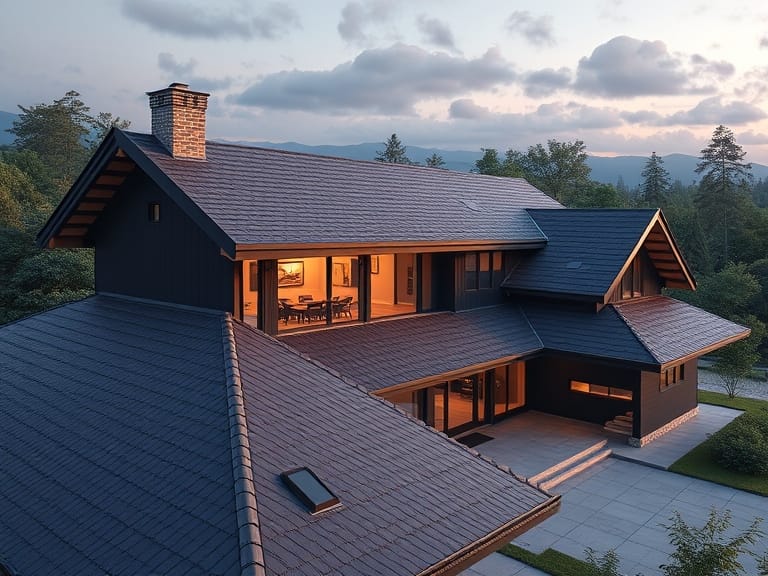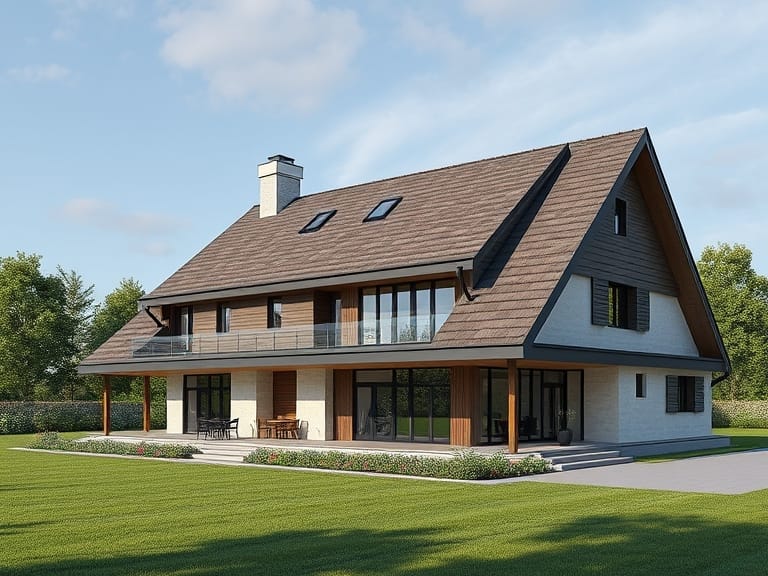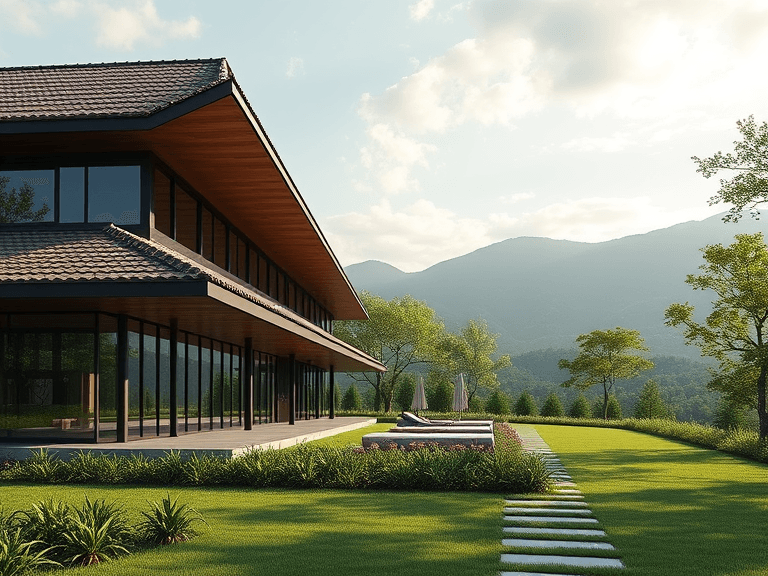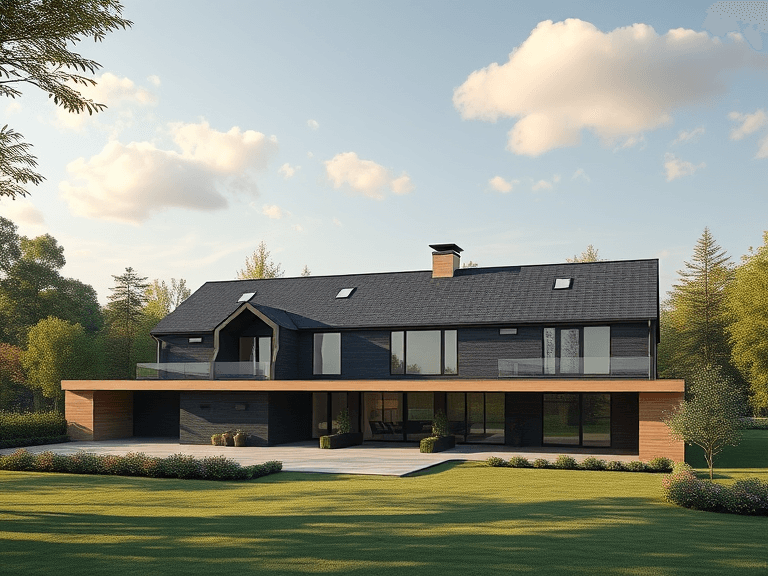
Roofing shingles serve as a critical component in the protection and aesthetic appeal of a home. These small, thin pieces of material are layered on top of the roof to create a waterproof barrier that safeguards the structure from various elements, including rain, snow, and wind. Their primary purpose extends beyond mere protection; they also contribute to insulation and energy efficiency, thereby enhancing the longevity of the underlying roofing material. An understanding of roofing shingles price variations begins with a clear recognition of the roles they play in roofing systems.
When exploring the market, one will encounter several types of roofing shingles, each designed with unique features and benefits. The most common categories include asphalt shingles, wood shingles, slate shingles, and metal roofing. Asphalt shingles, often preferred for their affordability and ease of installation, dominate the roofing landscape. They come in two primary varieties: organic and fiberglass, each with its own characteristics. In contrast, wood shingles, typically made from cedar, provide a rustic appearance but may require more maintenance than asphalt options.
Slate and metal shingles represent the higher-tier categories, known for their durability and long life span. Slate shingles are naturally occurring stone products, lending an exceptional elegance to the homes they adorn. However, their weight and cost can be considerable obstacles for some homeowners. Conversely, metal roofing has emerged as a popular eco-friendly option due to its recyclability and energy-efficient properties, although the initial installation cost can be substantial.
Understanding roofing shingles price variations necessitates an examination of these materials and styles, as the type, quality, and brand significantly influence overall costs. Various external factors, including regional climate conditions and local labor rates, further contribute to the price discrepancies seen across the market. By delving into these aspects, homeowners can make informed decisions about their roofing needs.
Factors Influencing Shingle Prices
The pricing of roofing shingles is influenced by several interrelated factors that must be understood to appreciate the variations in costs. The first and perhaps most critical factor is the quality of the materials used in shingle production. High-quality shingles, made from durable materials like asphalt, wood, or metal, typically command higher prices due to their longevity and performance. These materials are not only more resilient against harsh weather conditions but also tend to offer better warranties, adding value to the initial investment.
Another significant factor is brand reputation. Certain manufacturers have established themselves as leaders in the roofing industry, often due to their commitment to quality and customer service. Consequently, their products may be priced higher than lesser-known brands, reflecting the trust and reliability they offer. Homeowners often consider the long-term benefits when selecting shingles from reputable brands, understanding that paying a premium could save them money in repairs or replacements down the line.
Geographic location also plays a crucial role in determining the price variations of roofing shingles. Prices can fluctuate based on local market conditions, availability of materials, and regional labor costs. Areas prone to extreme weather may require more robust roofing solutions, leading to higher prices. Additionally, local regulations and building codes can impact the types and costs of roofing materials used in specific regions.
Finally, market demand impacts shingle pricing considerably. When demand exceeds supply, prices inevitably rise. This is often seen in booming real estate markets where new construction drives up the need for roofing materials. Conversely, during economic downturns, prices may stabilize or decrease as demand diminishes. Understanding roofing shingles price variations necessitates a careful consideration of these factors, which collectively shape the market dynamics.
Types of Roofing Shingles
Roofing shingles are available in a variety of materials, each with its own set of characteristics, advantages, and disadvantages. Understanding the different types of roofing shingles can provide valuable insight into the price variations prevalent in the market.
One of the most common materials is asphalt. Asphalt shingles are popular for their affordability and ease of installation. They come in two main types: three-tab and architectural. Three-tab shingles are generally less expensive but offer a flatter appearance. In contrast, architectural shingles are thicker, more durable, and often carry a higher price tag. Depending on the quality and brand, prices for asphalt shingles can range from $90 to $1000 per square, significantly influencing overall roofing expenses.
Wood shingles, typically made from cedar, provide a natural aesthetic with excellent insulation properties. However, they require more maintenance and are susceptible to rot and insect damage if not properly treated. The cost of wood shingles can be higher, ranging from $300 to $600 per square, which reflects their unique appearance and longevity. On the other hand, metal roofs, made from steel, aluminum, or copper, are increasingly popular due to their durability and energy efficiency. While the initial investment can be steep, often between $600 and $1200 per square, their longevity and low maintenance can make them cost-effective in the long term.
Another type of shingle is the composite or synthetic option, which mimics the appearance of traditional materials like wood or slate but comes at a fraction of the cost. Prices for composite shingles typically range from $400 to $700 per square, making them an attractive alternative. Each type of shingle directly correlates with price variations in the roofing market, making it essential for homeowners to understand these distinctions when planning a roofing project. Different materials come with unique costs, maintenance requirements, and aesthetic appeals that influence their overall value and contribution to the property’s marketability.
Regional Price Variations
When it comes to understanding roofing shingles price variations, it is essential to consider the impact of geographical location. Different regions often experience significant fluctuations in costs due to a variety of factors that can influence the overall pricing of roofing materials. One primary determinant is the local labor market. In areas where labor costs are high, likely due to increased demand for skilled workers, the price of roofing shingles may escalate accordingly. Conversely, in regions with a less competitive labor market, prices tend to remain more consistent or even lower.
Another important aspect is the climate of the region. Roofs in areas that experience extreme weather conditions, such as heavy snowfall or frequent rainfall, may require specialized shingles that are more expensive compared to standard options. For instance, impact-resistant shingles suited for hurricane-prone areas or those designed to withstand severe winters typically incur higher costs. Homeowners in such climates must factor in these considerations when budgeting for roofing projects, as the choice of materials can lead to marked differences in price.
Moreover, regional regulations and building codes play a vital role in determining roofing shingles prices. Some regions enforce strict guidelines regarding roofing materials and installations, which can drive up the costs. Compliance with these regulations may necessitate the use of specific types of shingles or the employment of certified contractors, both of which can affect the local price landscape. Consequently, homeowners should perform diligent research on the regulations in their area and how they pertain to roofing materials. Understanding the interplay between these factors can provide insights into the variations in roofing shingles pricing across different regions, ultimately aiding in making informed purchasing decisions.

Understanding Installation Costs
The installation costs associated with roofing shingles are a critical component in determining the overall price of a roofing project. When homeowners embark on a roofing upgrade or replacement, it is essential to recognize that the price variations in shingles themselves are only part of the equation. Labor costs for skilled contractors significantly contribute to the final expenditure.
Labor costs can vary widely depending on several factors including geographic location, the complexity of the roof design, and the experience of the roofing crew. Generally, homeowners can expect to pay between $100 to $150 per square for labor on an average residential roofing project. This cost may increase if the roof has a steep pitch or requires extensive preparatory work, such as old shingle removal or structural repairs.
In addition to labor, there are several essential materials and supplies that need to be considered. Underlayment, flashing, and ventilation systems are just a few items that can impact the total roofing expenses. Typically, the underlayment costs range from $0.50 to $1.50 per square foot, while flashing may contribute an additional $1 for each linear foot installed. Other items such as nails, sealant, and disposal fees for old shingles also add to the total cost.
Moreover, it is vital to account for the potential variations in costs associated with different types of roofing shingles. For instance, premium shingles may require specialized installation techniques or additional materials, further elevating the installation costs. Homeowners should obtain a detailed quote and breakdown from their roofing contractor, which outlines the labor and material costs. By doing so, they can gain a clearer understanding of roofing shingles price variations and make well-informed decisions regarding their roofing investments.
Comparing Shingle Prices from Different Suppliers
When seeking to understand roofing shingles price variations, it is crucial to conduct a thorough comparison of prices from various suppliers and manufacturers. This process not only involves examining the cost of the shingles themselves but also requires a consideration of additional factors that can impact overall value. A well-rounded approach ensures that consumers can make informed decisions and identify products that offer the best balance between affordability and quality.
One of the first aspects to consider when comparing shingle prices is the durability and warranty offered by different suppliers. Roof shingles with a longer warranty are often indicative of higher quality materials, which can lead to lower long-term maintenance costs. Gather information on the warranties provided by various manufacturers, noting how they differ. A product backed by a strong warranty often highlights the manufacturer’s confidence in their product, making it an essential element to evaluate in the context of roofing shingles price variations.
Additionally, assessing the long-term performance of roofing shingles can provide insight into their overall cost-effectiveness. Researching how well specific shingle brands withstand adverse weather conditions, as well as their resistance to elements like wind and UV rays, can reveal potential savings over time. Customer reviews also play a pivotal role by offering real-world insights into the experiences of other homeowners with the shingles being considered. Consistently favorable reviews can be a strong indicator of a reliable product.
In essence, looking beyond the initial price tag allows for a more comprehensive evaluation of roofing shingles. By carefully considering warranties, performance metrics, and user feedback, consumers can navigate the price variations effectively and ultimately arrive at a choice that represents the best value for their investment.
Impact of Seasonal Changes on Prices
Understanding roofing shingles price variations is crucial for homeowners planning to undertake roofing projects. One significant factor influencing these price fluctuations is the seasonal demand for roofing materials, particularly shingles. As construction and renovation activities typically surge during the warmer months, homeowners often find themselves facing increased prices for roofing shingles during this peak season. This heightened demand arises from favorable weather conditions, making it easier and more practical for contractors to perform roofing installations. Consequently, consumers may experience a notable rise in costs due to the imbalance between supply and demand during these months.
Conversely, during the colder months or off-peak seasons, the demand for roofing shingles tends to decrease sharply. This lull in activity prompts many roofing companies to offer competitive discounts and promotions to attract customers. As such, homeowners who choose to undertake their roofing projects in these off-seasons can take advantage of the reduced prices, potentially saving a significant amount on materials and installation costs. Understanding roofing shingles price variations in relation to the time of year allows consumers to make informed decisions, potentially optimizing their budgets.
Additionally, it is important to consider geographic location, as seasonal changes can vary significantly from one region to another. In areas with milder winters, roofing work may proceed year-round, while regions with harsh winters may experience prolonged delays. This variability can further complicate pricing structures and should be taken into account when planning a roofing project. Ultimately, the impact of seasonal changes on roofing shingle prices can be substantial, influencing buyer decisions significantly depending on when they choose to act.
Long-Term Cost Considerations
When selecting roofing shingles, it is crucial to consider the long-term costs associated with various options. Initially, choosing the cheapest shingles may seem financially prudent; however, this approach can lead to higher expenses over time due to several factors. Lifespan is a primary consideration, as different types of roofing shingles have varying durability and expected longevity. For instance, asphalt shingles typically last about 20-30 years, while metal or tile options may provide a lifespan of 40 years or more. Choosing shingles with a longer lifespan can reduce replacement frequency, presenting a more cost-effective solution over the roofing’s entire life cycle.
Moreover, maintenance costs play a significant role in the long-term financial implications of roofing shingles. Some materials require more frequent repairs or treatments, which can add up over the years. For example, wood shingles necessitate regular maintenance to prevent rot and insect damage, while composite shingles may require less upkeep. Understanding roofing shingles price variations also involves examining the costs of maintaining the selected material. Investing in quality roofing that demands minimal attention may ultimately save homeowners money in repairs and labor.
Energy efficiency is another important aspect that contributes to overall long-term costs. Certain roofing materials can offer better insulation and energy-saving properties, which can potentially reduce heating and cooling costs. Reflective shingles can lower energy bills, particularly in hotter climates. Therefore, while their initial price might be higher, the savings on energy costs can offset the initial investment over time. Evaluating the total cost of ownership, including factors such as lifespan, maintenance, and energy efficiency, is essential for making an informed decision on roofing shingles. In conclusion, focusing solely on upfront costs may lead to regrettable financial choices down the road.
Conclusion and Final Thoughts
Throughout this blog post, we have delved into the intricate world of roofing shingles price variations. The analysis began with an exploration of the various types of shingles available on the market, including asphalt, wood, metal, and slate, each presenting unique characteristics that contribute to their cost. Understanding roofing shingles price variations requires a comprehensive look at the materials used, the warranties offered, and the longevity of each type. Additionally, we discussed the critical role of installation costs, which can significantly impact the overall expenditure.
We also addressed external factors influencing pricing, such as regional market trends, local labor costs, and climate considerations. These elements shape not only the price but also the suitability of certain materials for specific environments. Homeowners must recognize that the ultimate goal is to find roofing solutions that offer durability and aesthetic appeal, balancing these with their budget constraints. Moreover, we highlighted the importance of conducting thorough research and obtaining quotes from multiple contractors, as this can unveil disparities in pricing and help identify the best value for the investment.
In light of these insights, it is imperative for homeowners to approach the selection of roofing shingles thoughtfully. Making an informed decision entails evaluating both cost and quality, ensuring that the chosen shingles meet both practical and aesthetic needs. By grasping the nuances associated with understanding roofing shingles price variations, homeowners can make choices that are not only economically sound but also enhance the long-term integrity of their homes. Engaging with professionals for guidance can further aid in navigating this complex landscape, ultimately leading to a roofing solution that aligns with individual preferences and financial considerations.


